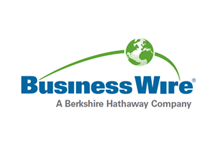Global Fire Sprinklers Market Trends, Share, Size & Growth (2019-2024) - ResearchAndMarkets.com
The "Fire Sprinklers Market: Global Industry Trends, Share, Size, Growth, Opportunity and Forecast 2019-2024" report has been added to ResearchAndMarkets.com's offering.
The global fire sprinklers market reached a value of US$ 9.1 Billion in 2018. Looking forward, the publisher expects the market to reach a value of US$ 14.7 Billion by 2024, registering a CAGR of around 8% during 2019-2024.
Industries like oil and gas, mining, and petrochemical are prone to fire accidents as they deal with flammable materials regularly. Owing to the frequent loss of life and possessions in fire incidences, the installation rate of these sprinkler systems has escalated in the past few years.
Moreover, manufacturers are continuously improving their products and introducing high-performance systems with minimal water wastage. For example, HI-FOG technology enables the flames to cool down effectively and displaces oxygen locally while using comparatively less water than traditional sprinkler systems. Manufacturers have also introduced high-performance automatic systems which employ thermal radiation technology to detect fires.
Additionally, governments across the globe are also imposing strict regulations for the installation of fire sprinklers in both public and private establishments. For instance, the National Building Code of India has mandated the installation of automatic sprinkler systems, fire extinguishers and water sprays. Similarly, the NFPA Building Construction and Safety Code in the US includes a requirement for home fire sprinklers in one- and two-family dwellings.
Some of the other key factor driving the market include growth in the construction and real estate sector, technological advancements, environmental benefits, etc.
Key Questions Answered
- How has the global fire sprinklers market performed so far and how will it perform in the coming years?
- What are the key regional markets in the global fire sprinklers industry?
- What is the breakup of the market based on the product type?
- What is the breakup of the market based on the service?
- What is the breakup of the market based on the component?
- What is the breakup of the market based on the application?
- What is the breakup of the market based on the technology?
- What are the various stages in the value chain of the global fire sprinklers industry?
- What are the key driving factors and challenges in the global fire sprinklers industry?
- What is the structure of the global fire sprinklers industry and who are the key players?
- What is the degree of competition in the global fire sprinklers industry?
- What are the profit margins in the global fire sprinklers industry?
Topics Covered
1 Preface
2 Scope and Methodology
2.1 Objectives of the Study
2.2 Stakeholders
2.3 Data Sources
2.4 Market Estimation
2.5 Forecasting Methodology
3 Executive Summary
4 Introduction
4.1 Overview
4.2 Key Industry Trends
5 Global Fire Sprinklers Market
5.1 Market Overview
5.2 Market Performance
5.3 Market by Product Type
5.4 Market by Service
5.5 Market by Component
5.6 Market by Technology
5.7 Market by Application
5.8 Market by Region
5.9 Market Forecast
6 Market by Product Type
6.1 Wet Pipe Fire Sprinklers
6.2 Dry Pipe Fire Sprinklers
6.3 Deluge Systems
6.4 Pre-Action Systems
6.5 Others
7 Market by Service
7.1 Engineering Services
7.2 Installation
7.3 Design Maintenance
7.4 Inspection
7.5 Managed Services
7.6 Others
8 Market by Component
8.1 Stop Valve
8.2 Alarm Valve
8.3 Fire Sprinkler
8.4 Head Alarm Test Valve
8.5 Motorized Alarm Bell
9 Market by Application
9.1 Commercial Applications
9.2 Residential Applications
9.3 Industrial Applications
10 Market by Technology
10.1 Active Fire Protection
10.2 Passive Fire Protection
11 Market by Region
11.1 North America
11.2 Asia Pacific
11.3 Europe
11.4 Middle East and Africa
11.5 Latin America
12 SWOT Analysis
12.1 Overview
12.2 Strengths
12.3 Weaknesses
12.4 Opportunities
12.5 Threats
13 Value Chain Analysis
14 Porters Five Forces Analysis
14.1 Overview
14.2 Bargaining Power of Buyers
14.3 Bargaining Power of Suppliers
14.4 Degree of Competition
14.5 Threat of New Entrants
14.6 Threat of Substitutes
15 Price Analysis
16 Competitive Landscape
16.1 Market Structure
16.2 Key Players
16.3 Profiles of Key Players
16.3.1 Honeywell International
16.3.2 Johnson Controls
16.3.3 Tyco
16.3.4 Minimax GmbH & Co. KG
16.3.5 API Group Inc.
16.3.6 United Technologies Corporation
16.3.7 Robert Bosch GmbH
16.3.8 Hochiki Corporation
16.3.9 VT MAK
16.3.10 Siemens AG
For more information about this report visit https://www.researchandmarkets.com/r/u54a00
View source version on businesswire.com: https://www.businesswire.com/news/home/20190416005464/en/





